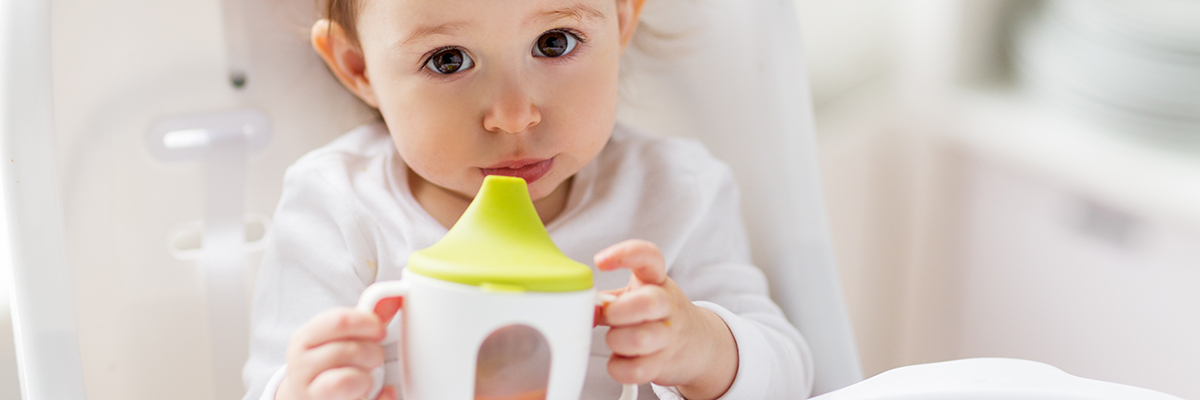
Article at a Glance
For some parents, it can be as hard for them to let go of the bottle as it is for their babies. It is difficult to break habits and taking care of a baby is hard enough without adding tough transitions. If you can’t seem to work up the guts to make the change, just remember that it will get harder the longer you wait!
Using a bottle for too long is also not healthy for your child. The American Academy of Pediatrics recommends weaning your baby from the bottle before your baby is 18 months old. The best time to get rid of the bottle is around one year when your child will be transitioning from breast milk or formula to cow’s milk. If you have been breastfeeding, you can skip using bottles entirely and just go straight to cups.
Dental Health: When things like juice or milk are sucked through a bottle, they stay on the teeth longer. Letting your baby go to sleep with a bottle is even worse and can lead to serious cavities. We have seen children with tooth decay have to undergo painful and expensive repair on their teeth. Juice should never be served in a bottle because the acid in the juice is particularly bad for teeth.
Sucking on a bottle can also change the position of the teeth and the development of facial muscles and the roof of the mouth.
Too many calories: Studies have shown kids who still use a bottle at 2 are more likely to be obese later. One reason is that bottles make it easy for kids to get a steady stream of calories all day long. Since older children are already getting enough calories from solid foods, this can add up to way too many calories.
1) Introduce the sippy cup: Let your baby start to use a sippy cup around 6 to 9 months old. Your baby should know how to use a sippy cup before you get rid of the bottles. Try including milk in the sippy cup so that your child will get used to drinking milk from something other than a bottle.
It is important to find a cup that your child likes to use. There are lots of different options from hard spouts, soft spouts, straws, and no spout at all. The more your child likes the cup, the easier it will be to wean later. You can also let your child practice with regular cups. Practice in the bathtub and it won’t matter if a little water gets spilled. Just make sure your baby isn’t filling the cup with bath water. Yuck!
2) Find a good time: Don’t try to wean if you are getting ready for a vacation, a big move, the birth of another child, or any other big changes. Too many changes at once can be hard on both you and your child.
3) Brace yourself: Getting rid of the bottle won’t be easy. Accept that and be willing to dig in your heels. It will be okay and this soon will pass. You can either go cold turkey or wean slowly.
Cold turkey
Depending on how old your child is, you can warn that the bottles will be going away and that you will now be using big-kid cups. Don’t try to do it behind their backs, you will just hit more resistance later. Let them help you get rid of the bottles.
Weaning
When you wean, you slowly replace bottles one at a time. The easiest one to replace first is the mid-day bottle. If your baby cries, let her know that she can have a bottle again at night. Then work on the morning bottle by getting your child to eat something solid before taking her bottle. Once your child is used to eating first, try replacing the bottle with a sippy cup. It will be easier for her to accept a cup if your baby isn’t “hangry.”
The hardest to remove is the nighttime bottle. Because it is often part of the nighttime routine, removing it can make it harder for your baby to go to sleep. Your best bet is to have multiple parts of your bedtime routine that you can fall back on, for example, reading a story, snuggling, or taking a bath.
If your child refuses to drink milk from a sippy cup, even for several weeks, don’t worry. You can help your child get plenty of calcium from other sources like yogurt, cheese, or calcium-fortified orange juice.
If you hit a lot of resistance, try these tricks:
For more information:
Taking Care of our Children’s Teeth
Healthy Eating Habits Start From Infancy
Baby Bottle Tooth Decay—How to Prevent It (Fact Sheet) (PDF) (English) (Spanish)